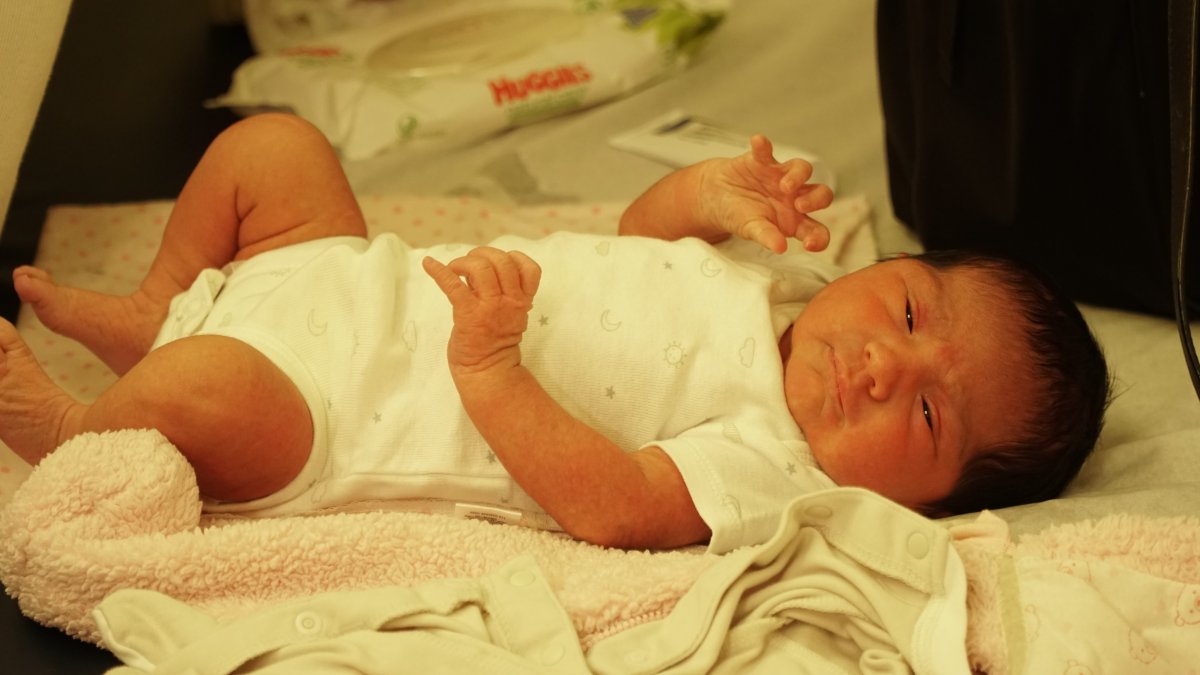Alexandra Abrill was pregnant and just days away from her due date in early December when she started feeling sick.

“My symptoms were fever, sore throat, congestion, chills,” she said. “So, I had to get tested.”
After her first COVID-19 test result came back “undetermined,” she was tested again. And this time, the result was positive.
“It was shocking,” she said. “Now I’m pregnant, I have COVID and I’m at the end of my term and about to give birth. What’s going to happen?”
Abrill’s partner and their three-year-old son also tested positive.
READ MORE: UBC study has warning for pregnant women about COVID-19
During the early days of the pandemic back in the spring, Abrill’s diagnoses would have shaken hospital staff. But over the past 10 months, frontline healthcare workers across hospital departments and disciplines have had a crash course in COVID-19, and they’ve learned a great deal about how to respond.
“There was definitely a lot more panic (during the first wave), just because we didn’t know as much about the virus,” Dr. Daniela Caprara said. “There’s still limited information, but we definitely have more cases that we can turn to.”
Caprara is a specialist in the department of obstetrics and gynaecology at Humber River Hospital, located in northwest Toronto in one of the city’s neighbourhoods hardest-hit by the pandemic. These days, hospital staff aren’t taking any chances. When pregnant patients arrive, they’re immediately tested for COVID-19, including those without symptoms.
READ MORE: U.S. woman gives birth while in coronavirus coma: ‘She’s a fighter’
“Oftentimes, the cases that do come back positive are asymptomatic women — so women that don’t have any symptoms at all — and then all of a sudden you get this surprising swab that comes back positive,” Caprara told Global News during a recent visit to the hospital’s maternity ward.
If a pregnant patient tests positive, they’ll be monitored more closely. Early evidence suggests expectant mothers with COVID-19 are at a slightly higher risk of hospitalisation, ICU admission and early labour, according to the University of British Columbia.
During the first wave of the pandemic, infected mothers in some hospitals were kept away from their newborns for up to two weeks, to protect the infants from potential exposure to the virus. Now doctors believe COVID-19 isn’t spread through breastfeeding and the benefits of keeping the mother and baby together typically outweigh the risks.

Get weekly health news
READ MORE: Singaporean baby born with coronavirus antibodies after mom’s pregnancy infection
Abrill’s daughter was born on her final day of quarantine. Her partner wasn’t allowed in the delivery and had to remain in quarantine for two weeks, but Abrill and her newborn were allowed to go home together. The baby later tested negative for COVID-19.
“So far, the studies are quite reassuring in that, if baby does contract COVID, typically they do not get very sick,” Caprara said. “I think as long as mom uses the proper precautions — washes her hands, wears a mask and does all these little things that we have seen help limit risk — then keeping mom and baby together are the most important thing.”
They are now affectionately nicknamed “corona babies,” a new generation born into a pandemic.

In the pandemic’s second wave, staff are also less worried about becoming infected themselves, thanks in large part to a steady supply of personal protective equipment. In the early days of the pandemic, staff struggled with a shortage and masks had to be signed out and carefully conserved.
“We’re far more prepared on wave two and so you don’t actually feel the same level of stress and anxiety,” said Leon Rivlin, chief and medical director of the emergency department. He said their confidence comes from being both better equipped and better informed about how the virus spreads.
READ MORE: ‘I’ll live to see another day’ — COVID-19 survivor describes effects of virus eight months later
“Initially, it was more of an educated guess around how the virus needs to be managed in terms of PPE. But now we know that facial coverings are critical. That’s why you see me wearing a visor covering my face and a mask, because even with our three-ply masks there’s still a little bit of viral transmission.”
Hospital CEO Barb Collins says that despite earlier fears about staff becoming sick and infecting their families, they’ve had few cases of transmission within the hospital.
“We’ve had some transmission, but the transmission has not occurred in the hospital for the most part. Largely, the staff who have become ill have picked it up outside.”
After months of battling an invisible enemy, hospital staff have also found novel ways to fight back.
Dr. Jamie Spiegelman, who works in the Intensive Care Unit, which is nearing capacity, says that around half his patients have COVID-19.
“I think what we have learned is that we know how to treat it better,” Spiegelman said.
One key difference: they’ve learned how and when to put patients onto a ventilator — a breathing machine that involves inserting a tube into the patient’s airway. Once a COVID-19 patient is placed on a ventilator, their chances of survival drop significantly. Doctors are now relying more on pressurized, high-flow oxygen systems, which deliver oxygen through a mask into the nose instead of a tube down the throat.
“They can be managed without putting them on a ventilator, but with closer monitoring and with a special oxygen delivery device,” explained ICU Dr. Brian Cho. “And we have seen some of these people not requiring ventilator and actually get better. But it is a very small percentage of patients.”
One of Dr. Cho’s patients, a 69-year-old man, isn’t getting enough oxygen, so the medical team performs a delicate dance, carefully flipping the unconscious patient from his back onto his stomach. They’ve learned the procedure, called proning, can increase blood oxygen levels and chances of survival.
“When you’re lying on your back all the time, only one part of the lungs is being supplied with oxygen. And the posterior part, it can lead to collapse of the lungs back there,” said physiotherapist Sara Mackellar. “So to help improve their breathing, we turn them on their stomach so that the back of their lungs can get ventilated as well.”
Because COVID-19 can attack in different ways, Dr. Spiegelman has brought back-up. As he visits each patient’s room, he’s flanked by a respiratory therapist, a physiotherapist (Mackellar), a nutritionist, a nurse and a social worker, who helps with emotional distress made worse by the ongoing visitor restrictions.
Patients now regularly receive steroids, such as dexamethasone. Dietician Denise Poirier also provides them with vitamin D and zinc.
“When someone has acute respiratory distress syndrome, there’s certain vitamins and minerals that are applied,” Poirier explained. Yet having said that, Poirier added that because the virus is brand new, there’s nothing scientifically proven yet that any of those nutritional components are effective.
And that remains a common refrain. Despite all they’ve learned about the virus, there is much they still don’t know. “We still clearly do not understand how it works, who it affects the worst,” Spiegelman said. “We don’t completely understand it. And I don’t think we’ll understand until it’s over.”
See this and other original stories about our world on The New Reality airing Saturday nights on Global TV, and online.










Comments